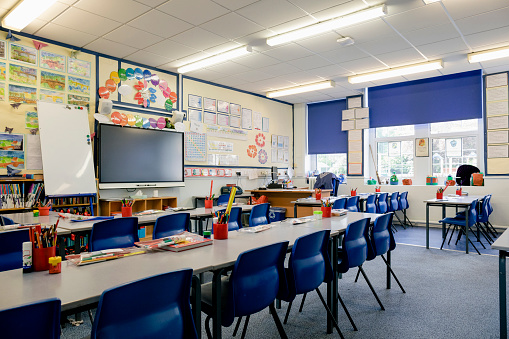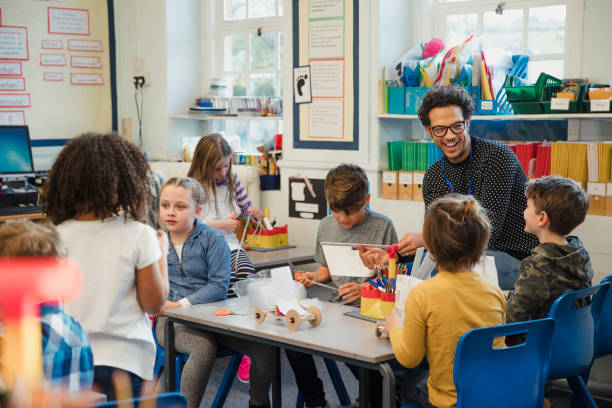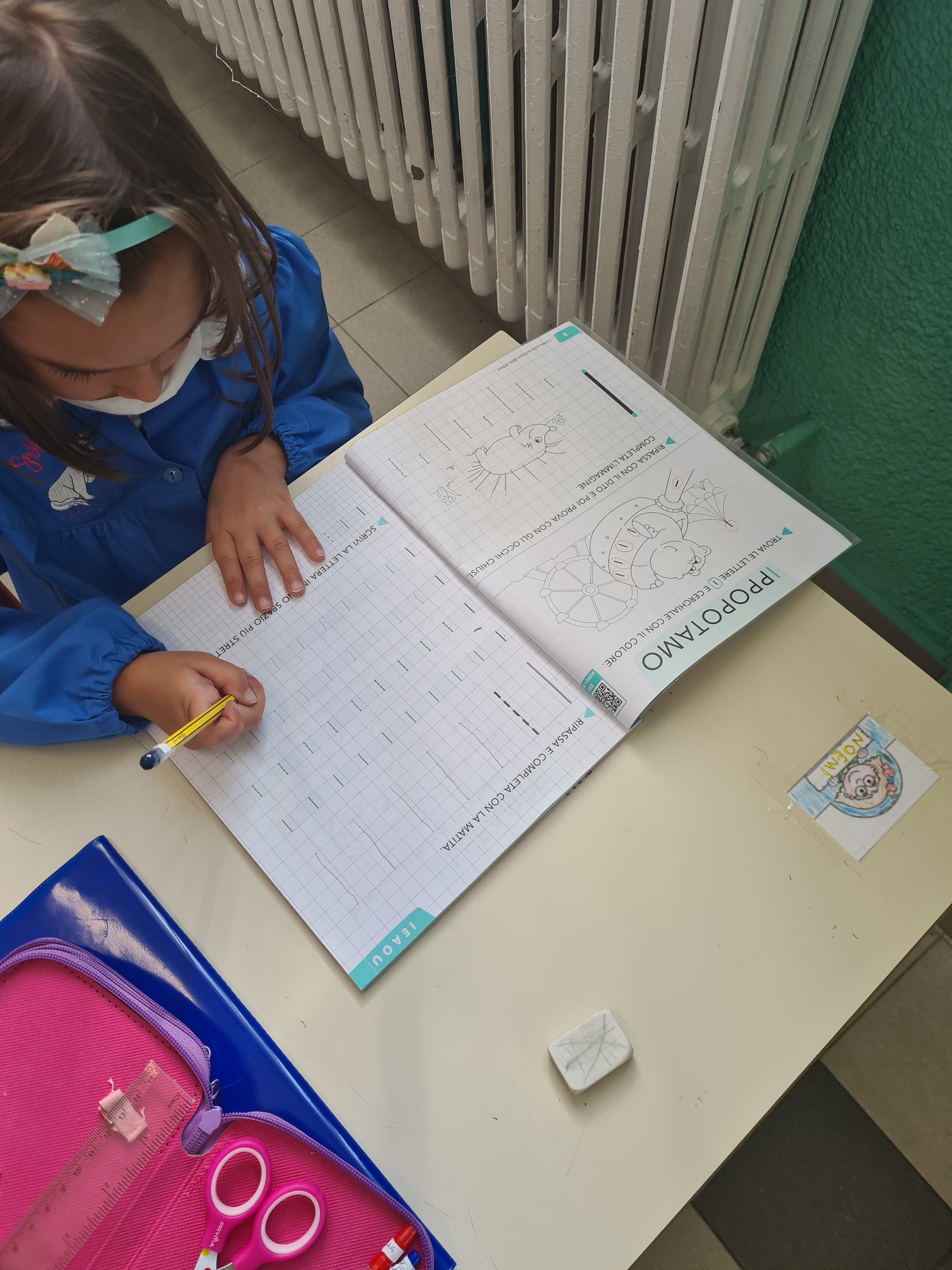Elementary - Objectives And Aim Of Elementary Education
Elementaryeducation, often known as primary education, is the initial level of formal education, starting around the age of 5 to 7 and finishing around the age of 11 to 13. The term primary is used instead of elementary in the United Kingdom and certain other nations. In the United States, primary school refers to only the first three years of elementary school or grades one through three. Elementary education is sometimes preceded by some preschool for children aged 3 to 5 or 6, while secondary education is frequently followed.
Despite the various cultural and political differences between countries, the goals and curriculum for primary education are generally comparable. Almost every country has made an official commitment to universal education, which is envisioned to eventually include comprehensive elementary education for all. As a result, there is a growing consensus across countries that citizenship training is one of the primary goals of elementary education. This goal recommends a focus on reading and writing abilities, arithmetic skills, and fundamental social subjects and science in the curriculum.
Elementary Education Curriculum
Elementary education should attempt to develop a child's spiritual, moral, mental, and physical skills, offer him democratic life experiences, and instill ideas and attitudes that will lead to educated, patriotic, upright, and productive citizenship. To meet these goals, the elementary education curriculum must include:
- the instillation of spiritual and civic values, as well as the development of a good Filipino based on an abiding faith in God and genuine love for country
- the training of the young citizen in his rights, duties, and responsibilities in a democratic society for active participation in a progressive and productive home and community life.
- basic grasp of Philippine culture, acceptable traditions, and people's values as necessary prerequisites for achieving national consciousness and solidarity
- teaching basic healthknowledge and the formation of desirable health habits and practices;
- development of functional literacy, in Pilipino and English, as basic tools for further learning
- acquisition of fundamental knowledge, attitudes, habits, and skills in science and math is essential for achieving national consciousness and solidarity.
Aims Of Elementary Education
The following are the primary goals of elementary education:
- Its goal is to teach and improve learners' life skills so that they can become responsible citizens.
- It promotes the development of fundamental reading, math, and literacy abilities.
- Its goal is to help students develop spiritually, morally, culturally, mentally, and physically in school and society.
- Its goal is to prepare children for eventual adult duties, experiences, and opportunities.
- Its goal is to help youngsters develop in a harmonious and effective manner.
- Its goal is to help all students develop holistically.
- Its goal is to provide each student with a distinct identity.
Objectives Of Elementary Education
The primary goal of elementary education in India today and in the future is to generate highly literate students who can successfully use the information and knowledge they have obtained. It also aspires to help youngsters communicate well and make well-informed decisions so that they can adjust to the different changes that are occurring around them. Because technology breakthroughs and globalization mark the present era, it is critical to prepare children for a digital future.
Primary Objective Of Teacher Education At Elementary Level
The major goal of teacher education is to acquire the ability to stimulate experience in students in an artificially manufactured environment, using fewer material resources and more emotional resources. A teacher's ability to do, observe, infer, and generalize should be developed.
Elementary Education USA
Prekindergarten or kindergarten is the start of elementary school, which lasts until the eighth grade. In 2005, the average student/teacher ratio was 15.8, with lower ratios in smaller primary schools. Mathematics, science, language arts, social studies, computer/technical skills, and physical education/health are all part of the primary curriculum, which varies by state.
School attendance regulations differ by state, but in general, obligatory schooling begins between the ages of 5 and 8 and concludes between the ages of 14 and 18. The school day lasts an average of 7.4 hours, and the school year is 181 days long.
Elementary Education England
In England, compulsory schooling begins at the age of five and lasts until the age of sixteen. When a kid turns five, they begin formal schooling in a two-year infant school or department. Students may then attend junior high school until they are eleven years old. However, some local governments have developed "first" schools for children aged 5 to 8, 9, or 10, as well as "middle" schools for children aged 8 to 14. In Canada, a primary school might last 8, 7, or 6 years, depending on the province. Compulsory attendance in Australia begins at the age of six and continues until the age of fifteen in five states and sixteen in Tasmania. Elementary and secondary schooling typically last six years each.
People Also Ask
What Do You Mean By Elementary Education?
The initial step of formal education is elementary education. It lasts six years (grades 1–6) and is free and mandatory for children aged 6–11. Some excellent private elementary schools also provide an optional extended elementary level, grade 7.
What Are The Features Of Elementary Education?
Children must start elementary school at the age of five or six, and elementary school can last up to six years. Reading, writing, mathematics, art, geography, history, physical education, fine arts, and foreign languages are common topics.
What Are The Four Problems Of Elementary Education?
Government colleges face challenges such as a shortage of professors and students, poor infrastructure, unsanitary conditions, indiscipline, politics, lack of accountability, casteism, corruption, and feelings of inferiority.
Conclusion
In the article, the objectives and aims of elementary education are clear. In preschool, measures are done to acclimate the children to the school environment and a new instructor, but the curriculum is established to provide a well-rounded education in primary schools. Furthermore, pupils are provided a strong foundation for secondary school, as well as the skills necessary to become compassionate citizens and lead happy lives.




